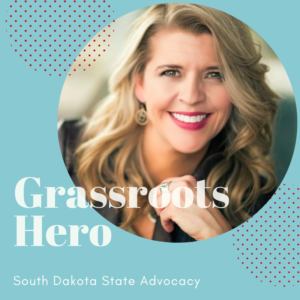 In 2017, South Dakota passed a groundbreaking law to ensure survivors of sex trafficking, ages 16 and under, are protected from criminalization. This effort began two years ago when Becky Rassmussen, Executive Director of Call to Freedom, an awareness-raising and survivor-serving organization, recognized the important perspective she could bring to the legislative process. Seeking to address South Dakota’s D grade, Becky reached out to Shared Hope for technical assistance, and together with local partners, three critical pieces of legislation were passed strengthening the state’s response to child sex trafficking.
In 2017, South Dakota passed a groundbreaking law to ensure survivors of sex trafficking, ages 16 and under, are protected from criminalization. This effort began two years ago when Becky Rassmussen, Executive Director of Call to Freedom, an awareness-raising and survivor-serving organization, recognized the important perspective she could bring to the legislative process. Seeking to address South Dakota’s D grade, Becky reached out to Shared Hope for technical assistance, and together with local partners, three critical pieces of legislation were passed strengthening the state’s response to child sex trafficking.
Read our interview of Becky Rassmussen, one of our grassroots heroes! You can become a grassroots hero by taking action to tweet your state’s grade to your elected official. Take action here!
Can you provide a brief background on your role as an anti-sex trafficking advocate?
As Executive Director of Call to Freedom of South Dakota, I have had the privilege of working with some of the most amazing people that are dedicated to helping survivors of Human Sex Trafficking. We strive to cultivate relationships and link arms with others who are dedicated to helping create a cohesive community model of care and support for victims, bringing communities together while educating and legislating to stop human trafficking.
…and what sparked the genesis of Call to Freedom?
Call to Freedom was birthed out of love and deep concern to affect real change starting here at home. Like many of us, I have encountered countless individuals who needed a lot of support if they were going to be successful in transitioning out of this nightmare.
Navigating a healthy path for victims of human trafficking is not just a clever motto on our website, but has become our creed. We take it to heart every single day, knowing this atrocity is very real and happening in our own backyard. We take comfort and remain motivated in knowing we really can do something about it, if we all work together.
As an advocate, I am inspired everyday by working directly with those who have been victimized and with all the individuals who authentically love and serve those in need. I become an advocate because of the inspiring unsung heroes who showed me the overwhelming need to help and empower survivors so they could know and believe they have a voice, a choice and that they really do matter.
What drove you to seek change in this area?
For me, it really hit home at the annual Sturgis Motorcycle Rally in SD, with over a half a million people in attendance over a period of 10 days. I was shocked how many gaps in services there were within the United States for those who were coming out of human trafficking. 3,287 individuals are pulled into human trafficking on a daily basis and there were less than 300 beds designated for women trapped in human trafficking and only a handful for boys at the time. Trafficking victims were falling through the cracks and they weren’t getting the help and support they needed to be successful in transitioning out.
What approach have you taken? On a grassroots level, how have you mobilized fellow stakeholders to develop an agenda that seeks improvements in both policy and practice?
We first focused our efforts on the local level, working with law enforcement, creating open dialogue and building relationship so we could all ask the right and difficult questions. We had to find healthier ways to work together that would accomplish each of our individual missions and at the same time help avoid re-victimizing those in transition in the process.
What does grassroots collaboration look like for you?
Unfortunately, we soon discovered there were lots of different legislation gaps – in services, responses, screening questions, etc. that had not yet been implemented in the State of South Dakota.
Our response was to begin holding weekly luncheons and talk to people about what we were experiencing, first hand, here in South Dakota. We began to ask for input, feedback and ideas, empowering them to stand in the gap with us and become part of the solution.
Over time we earned the trust of most of our community leaders both locally and across the state. We were consistent in education and opportunities that helped build up the community and empowered everyone who wanted to know how to become proactive.
It wasn’t long before more and more community leaders and legislators began responding to the call. Soon individuals like State Representative Tom Holmes and Senator Jack Kolbeck were willing to carry three important pieces of legislation that unanimously went through the House and Senate, and have since been successfully integrated into South Dakota law and are now making a real difference.
Since then, many have stepped up to fill in the void. Legislators have supported our efforts. Law Enforcement, US Attorney’s office, and all those who are involved in prosecuting and supporting victims, have tirelessly worked together for the greater good. It’s amazing what we can accomplish when we don’t care who gets the credit.
We all continue to work together to create and refine laws that protect survivors and will ultimately send a clear message to the traffickers and Johns… “Stay out of South Dakota or suffer the consequences.”
How have the Shared Hope Protected Innocence Challenge tools (report cards and related materials) influenced or empowered your efforts?
Shared Hope is a valuable asset to what we are doing here in South Dakota. We are extremely grateful for their ability to create awareness and help us in our research of what other States have done successfully and how we can make our legislation more effective. They have been an invaluable partner, helping us to get the most out of our collaboration with our States’ Attorney and Attorney General’s office and helping us find the right words for our legislation in South Dakota.
What, in your mind, are the most notable legal and practical achievements that are a result of your advocacy and collaborative efforts?
We are now in the process of developing and strengthening a task force, which brings everyone to the table for the first time with a single focus; to work together and end human trafficking in South Dakota.
The support now from law enforcement on a state and federal level and many other service providers is so encouraging. I am overwhelmed with gratitude and filled with hope to see how many communities have responded. Everyone is eager to learn all they can about human trafficking so we can best incorporate protocols, procedures and responses within our own communities.
We have successfully worked together to change and strengthen legislation in South Dakota, create public awareness, effectively support and protect survivors, change the public view about victims and their unimaginable plight and successfully help survivors find the support they need to start over.
We continue to learn everyday how we can best work together in this process, promoting collaboration and unity so we might become a braided cord and effective advocates. If we stand together, each of us doing what we can, we will accomplish our mission and erase human trafficking… one community at a time.






